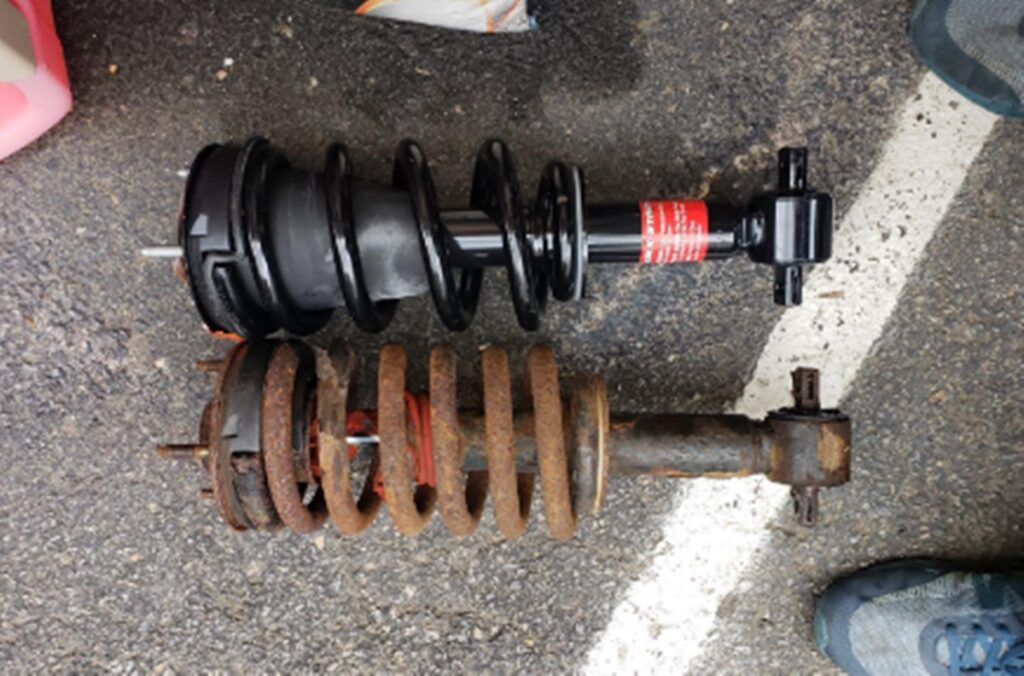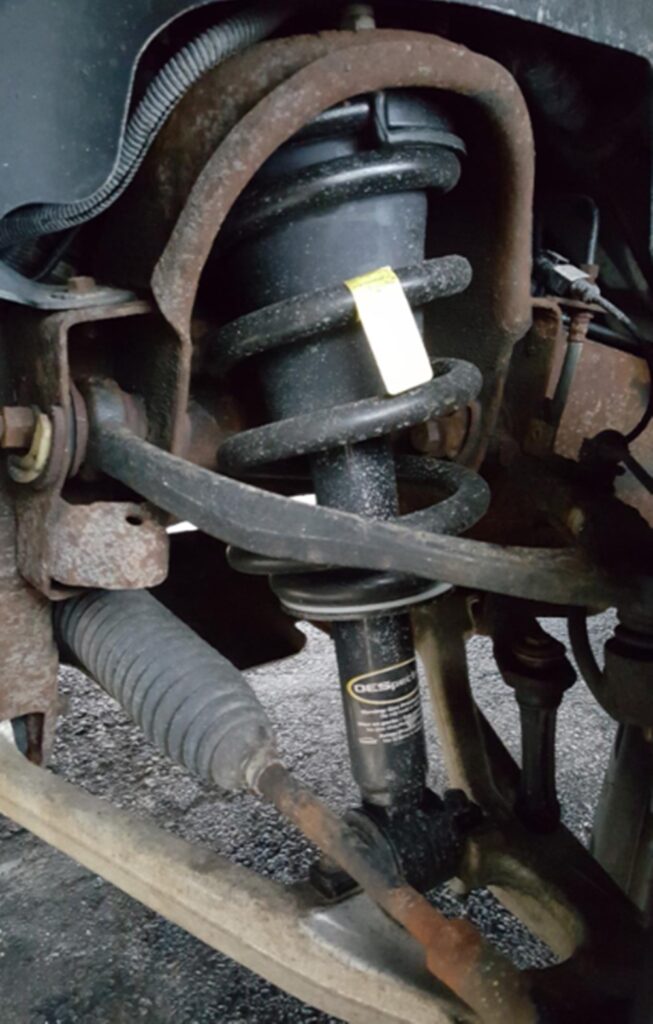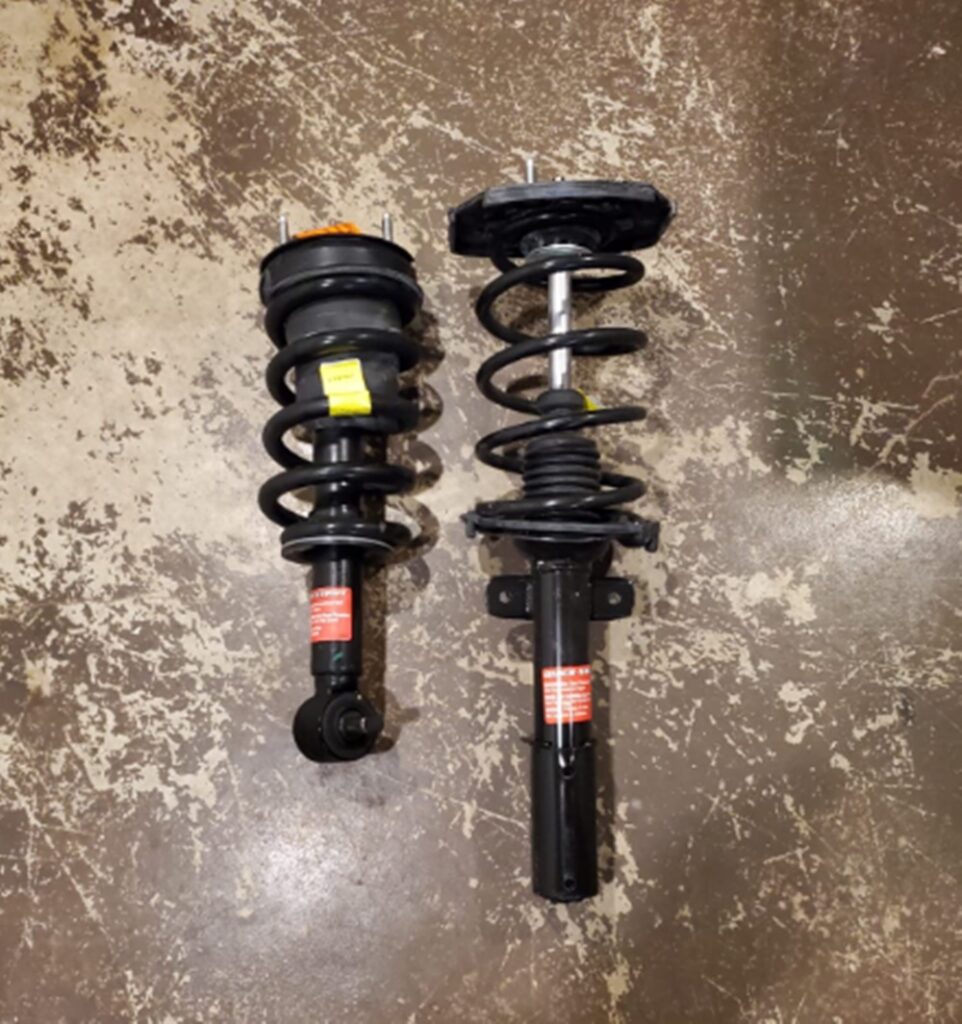Struts are independent constructional parts of the suspension system and they have two main jobs: perform a damping function like shock absorbers do, and provide structural support to the vehicle’s suspension. Read on to find out more as I go into detail about struts on a car.
Key Takeaway
- Struts are part of the front suspension system that acts as structural support to the vehicle and also dampens and controls the rebound.
- If a strut goes bad, your vehicle will nose-dive when you hit the brakes, there will be excessive bounces on rough surfaces, the vehicle might veer in crosswinds, the tires will wear out unevenly, and fluid will start leaking from the strut.
- The struts usually last between 50,000 – 100,000 miles depending on the condition of the roads.
- If you do not replace a bad strut, the front of the vehicle will be lower than the back which results in increased braking distance.
What Are Struts On a Car

Struts are a part of the front suspension system on cars and act both as a structural support that keeps the vehicle at a specific ride height, and also serve to dampen and control rebound by turning kinetic energy into thermal energy.
A strut is filled with fluid that is being pushed through a series of small holes called orifices inside by a piston. These orifices only allow so much fluid to travel through them at a given rate which is how a vehicle gets the dampening. And since the strut is basically a structural part of the suspension system, without it, the vehicle will be basically sitting on the wheels.
Apart from the obvious purpose of the strut which is to provide structural support to the vehicle and absorb the force of bumps in the road, they have one more role which is to affect the handling of the vehicle.
The purpose of the struts is not only to absorb kinetic energy but also to transfer it to the tires in order to create safe and predictable handling. Struts help with the weight transfer involved in braking, accelerating, and cornering.
Many aftermarket struts are designed with goals other than comfort and functionality. They offer a great deal of adjustability in their absorption rates which can provide a stiffer or softer ride. Also, they allow your vehicle to sit lower without damaging the strut itself.
How Do I Know If My Struts Are Bad?

Usually, after about 50,000 miles of driving, it is a good time to start checking your suspension components for wear, especially if you have been doing a lot of towing and hauling. An excessive rebound that feels like a very bouncy ride is probably the most common sign that your struts are no longer functioning properly. Here are more signs that your struts are bad.
1. Nose-diving when braking

Have you ever been in a situation where you had to quickly slam on the brakes to avoid an accident? Maybe a car in front of you has stopped or there is a pedestrian crossing the road.
When your struts are bad, hitting the brake will cause a sudden shift of weight forward and will cause your vehicle to nose-dive. Since bad struts are unable to hold the extra weight of the car, they will lower the front end of the vehicle. This will result in increased stopping distance because the rear of the vehicle will be lifted up and the rear braking performance will be reduced.
Many car owners take for granted the importance that struts have on a vehicle’s ability to stop safely and effectively. Worn struts at a speed of 70 mph can increase the stopping distance by more than 22 feet. Those 22 feet can be the difference between a close call and a collision.
2. Excessive bounce on rough surfaces

When you drive over a bump or rough surface, it’s actually the springs in your car that absorb the impact and not the struts. The struts are there to control the bouncing spring and help keep your tires glued to the road.
When you hit a bump, your vehicle should rise and fall quickly and then stabilize after one or two rebounds. If you notice that your vehicle is continuing to rock up and down after hitting a bump, or if the suspension routinely bottoms out when going over potholes, it’s a sign that you need to have your struts checked.
3. Vehicle veers in crosswinds
If your vehicle rocks back and forth when you drive past a large truck or strong crosswinds shake your vehicle, there is a good chance that your struts aren’t functioning properly. When struts lose their damping ability, your vehicle is less stable in windy conditions. This is even more noticeable and dangerous for light trucks, SUVs, or vehicles towing heavy loads.
4. Uneven tire wear

Another indicator that your struts might be worn or damaged is to check your tires for any uneven or premature tread wear. Premature wear of the tires can be a clear sign of a worn strut, especially if it only occurs on one side. You can also check for cupping or scuffing of the tires.
Uneven tire wear is caused by the strut’s inability to control the suspension which causes the tire to bounce and wear unevenly while you drive. However, there are many other factors that can cause premature or uneven tire wear. So, make sure that you have your vehicle inspected by a professional.
5. Fluid leakage on the struts

If you drive on harsh country roads, periodically check for fluid leaking from your struts. Ice, snow, grit, and debris can easily scratch or damage the piston rod allowing grit and dirt to harm the piston seal. When the seal is compromised, fluid can leak and impair the strut’s ability to control the vehicle.
If your strut is leaking, you’ll likely see a thick solid coat of grime, grit, and dirt built up on the leaked oil. An undamaged strut might have some road dirt, but it won’t be as extensive. Occasionally inspect your struts and look for any discoloration or excessive grime and dirt on the body of the strut.
How Many Miles Do Struts Usually Last?

The lifespan of struts depends on how hard the struts worked throughout their life. The struts mounted on a vehicle that travels on a smooth highway are probably going to last over 100,000 miles. However, if you drive a truck with a load on its bed, on a bad road, the struts are going to last about 50,000 miles or less.
The function of the strut is to dampen the movement of the spring. The spring absorbs the energy from the road and this energy is then absorbed by the struts and converted to heat. This heat is dissipated through the canister of the strut into the atmosphere.
If you are driving down a bumpy road going 55 mph, the strut is working pretty hard, but not the hardest because you have some airflow that is cooling them down. If the struts are able to dissipate the heat successfully, they are working properly.
However, driving slowly with a load in your vehicle is going to create a lot of heat that isn’t being cooled down fast. This is how struts suffer the most.
What Happens If You Don’t Replace Struts?
If you don’t replace struts when they go bad, you will experience excessive bounce on rough surfaces because the struts are supposed to provide a dampening effect. If you ignore the first sign of failing struts, you will notice uneven tire wear, oil leakage from the struts, hard time cornering, and nose-diving when braking.
Struts play an absolutely essential role as part of a car’s suspension system. They are designed to absorb any shock that comes from the impact of driving over rough or uneven terrain, or even just regular bumps in the road.
By dampening some of this impact, struts ensure that passengers have a comfortable ride while reducing wear and tear on other parts of the suspension system components. Struts also provide structural support and hold the weight of the vehicle at a specific height.
If your struts are going bad and you don’t replace them, your overall driving experience will worsen significantly. If you drive over a large pothole, the vehicle will have multiple rebounds before stabilizing. You will feel like you are in a boat. This is very dangerous when going into corners because you won’t have much control.
For me, the worst situation that bad struts can put you in is when you are driving on a windy day. You will be able to feel the winds just blowing your vehicle left and right. This is especially hard if you are driving pat a large truck.
